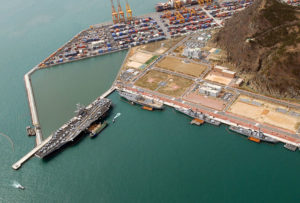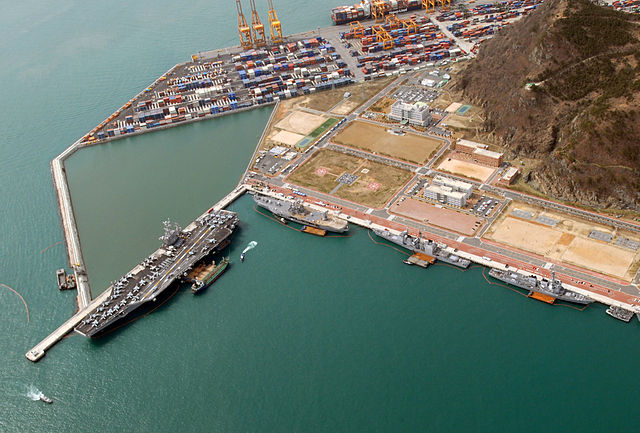 Declining exports have adversely affected both the industrial output and seaport cargo volumes of South Korea as global economic activity continues to slacken.
Declining exports have adversely affected both the industrial output and seaport cargo volumes of South Korea as global economic activity continues to slacken.
Industrial output fell for the second consecutive month in April, widening its downward pace due mainly to a sharp drop in the production of the auto and electronics parts, a government report showed.
Production in the mining, manufacturing, gas, and electricity industries fell 2.8% last month from a year ago, according to the report by the National Statistics Office (NSO) Korea. From a month earlier, industrial output also retreated 1.3%.
The April figure represents a contraction for two months in a row after it backtracked to a 0.6% year-on-year fall in March. In February, the country’s industrial output rose 2.2% year-on-year, said a news report released by Yonhap.
Production in the service sector expanded 2.1% from a year earlier and improved 0.5% month-on-month.
For all industries, output inched up 0.8% in April from the same month in 2015 but fell 0.8% from a month earlier.
Sluggish car production led the decline, sinking 8.7% year-on-year, while the output of electronics parts, including displays, plunged 12.7%.
Production in the semiconductor and petroleum industries jumped 15.1% and 9.1%, respectively, to offset the sharp decline.
“As South Korea’s exports have been in the doldrums for months, key industries, such as cars and electronics, can’t help being at their low ebb,” said Eo Woon-sun, director of the NSO’s short-term industrial statistics division.
April’s average plant utilization in the manufacturing sector reached 71%, down 2.7 percentage points from a month earlier.
Hope for an export rebound
The country’s exports have decreased for 16 straight months since January last year, the longest contraction streak in its history.
But while exports continued to dwindle in May compared to a year earlier, the rate of drop slowed significantly, the government said.
Outbound shipments came to US$39.78 billion last month, down 6% from the same month last year, according to the Ministry of Trade, Industry and Energy.
The 6% year-on-year decline marked the slowest rate of drop since the start of the year. In January, exports plunged 18.5%, marking the fastest rate of drop since August 2009.
Seaport throughput backslides
As this developed, the amount of cargo processed at South Korea’s seaports slipped 1.2% in April from a year earlier due to a drop in the transport of soft coal and vehicles.
The volume of cargo handled at six seaports came to 119.32 million tons last month, according to the Ministry of Oceans and Fisheries.
The ministry attributed the decreased volume to the decreased shipping of soft coal and cars amid the global economic slowdown.
Chemical shipments at the ports jumped 13.4% year-on-year, and cargoes of sand and cement rose 7.2% and 3.4% , respectively, the ministry said.
In contrast, the handling of vehicles tumbled 16.9% during the period, while soft coal and engineering equipment each fell 9.9% and 4.8%, it said.
Mokpo Port on the southwestern coast was hit the hardest by the sluggish exports of cars, marking a 31.4% fall in April from a year ago.
Busan, the fifth largest port in the world, handled 1.58 million 20-foot equivalent units in April.
Photo: U.S. Navy photo by Mass Communication Specialist 2nd Class Matthew Schwarz/Released





